If you were to ask 10 yogis the question, "What is yoga?," you would probably get 10 different answers.
They may also have 10 different styles of yoga practice, because yoga is being labeled, branded and packaged in a myriad of ways to serve the products and people attached to it.
In order to sort out the true meaning of yoga, it is helpful to start with the etymology of the word itself.
What Does Yoga Actually Mean?
The word yoga comes from the Sanskrit root word “yug,” which literally means to yoke or unite.
This union is not referring to your fingers touching your toes or your nose reaching your knees. It's also not referring to the union of mind and body, although, this is commonly repeated within the yoga community.
The union that the word yoga is referring to is that of uniting individual consciousness (our individual experience of reality) with Divine consciousness (the essence of truth as perceived when we quiet our five senses and reconnect with the Supreme Self within).
Yoga philosophy is one of the six branches of the Vedas, which are considered to be one of the world’s oldest scriptures.
The first branch, called Vedanta, explains that all knowledge and experience comes from one underlying consciousness, or reality.
The second branch, Sankhya, describes how the one consciousness differentiated itself to appear as many things.
The third branch, which is yoga philosophy, describes the processes needed to realize our unity with the one consciousness so that we may free ourselves from the suffering felt through our perceived separation.
All yoga practice is to serve the unfolding of infinite potential of both the human mind and eternal Self.
Through this ultimate union of the self with the Divine, we experience lasting bliss, or bhoga, and liberation from suffering.
Read: The Meaning of Moksha
The Five Paths of Yoga Practice
There are five main paths of yoga practice that lead us to this goal of spiritual reunification.
1. Hatha Yoga
Most people in the West are most familiar with the first one, Hatha yoga, as it includes the physical practice of yoga asanas that have become so popular.
In addition to asana practice, there are other energy controlling techniques through the breath and cleansing rituals to purify and strengthen the physical body, enabling control of both our internal and external state of being. These were all formulated with the intent of preparing the body to be still in meditation.
Read: 4 True Purposes for Why We Practice Yoga Asana
2. Karma Yoga
Karma yoga is the second path of practice. It is selfless service offered to others without attachment to the results.

To truly practice Karma yoga the yogi performs all actions with the consciousness of Spirit as the doer of all. This requires inner renunciation and the release of the ego, believing it is the initiator of action.
3. Mantra Yoga
The third path is Mantra yoga. This is the centering of consciousness within through the repetition of Sanskrit bija mantras representing a particular aspect of Spirit.
An example would be So'ham, meaning I am that. It is an affirmation of the unity of the individual self with Universal Self. (Learn more in So'ham. I Am That.)
4. Bhakti Yoga
The fourth path is Bhakti yoga, the practice of devotional love. Through Bhakti yoga we surrender self completely and strive to perceive the inherent oneness of all beings, thereby maintaining unending worship.
Like Jesus who instructed his disciples to "pray without ceasing," Bhakti yoga is the path of pure immersion in love.
Read: Bhakti Yoga: How the Path of Devotion Connects Us
5. Jnana Yoga
Finally, the fifth path of practice, and the one said to be the most difficult, is Jnana yoga. This is the path of wisdom, and it emphasizes discriminating intelligence to achieve spiritual liberation.
The reason it is the most difficult is that the mind, by nature, operates within the sensory, temporal realm and is thereby limited.
The Royal Path
Combining all of the above into one final and complete "royal path," Raja yoga is the practice described in the Bhagavad Gita and systematized by the Indian sage Sri Patanjali.
The ancient text known as the Yoga Sutras is credited to Patanjali in which he outlines the Eight Limbs of Yoga.
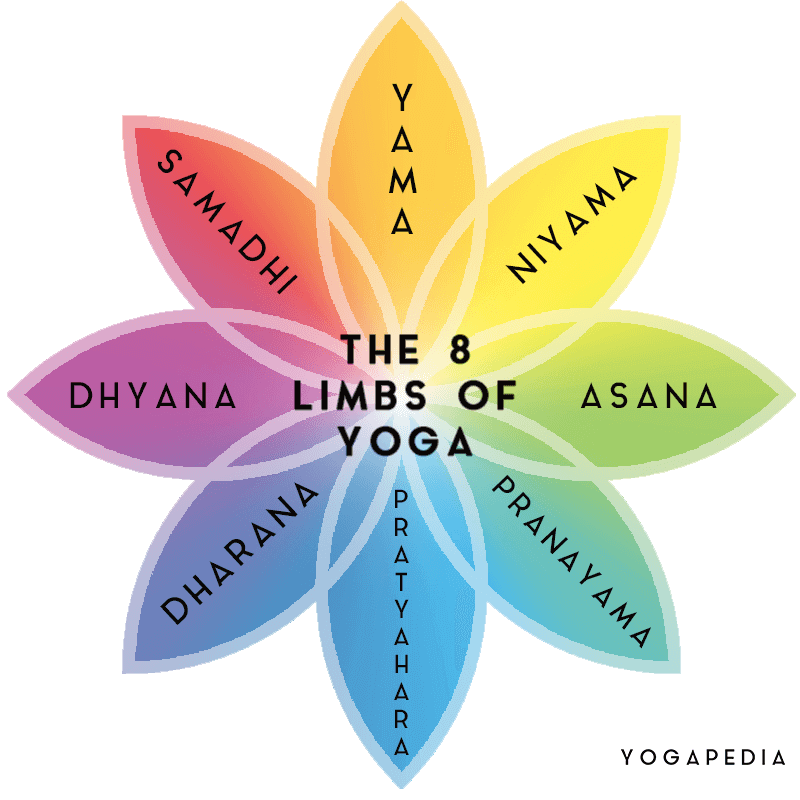
These inner and outer practices all move toward a scientific method of meditation that enables us to perceive our unity with the ever present, ever conscious, blissful Spirit.
Read: A Journey Through The 8 Limbs of Yoga
The Eight Limbs of Yoga
To overview the classical path of the Eight Limbs of Yoga, we begin with the Yamas, moral qualities we need to cultivate in order to reconnect with our true unified nature.
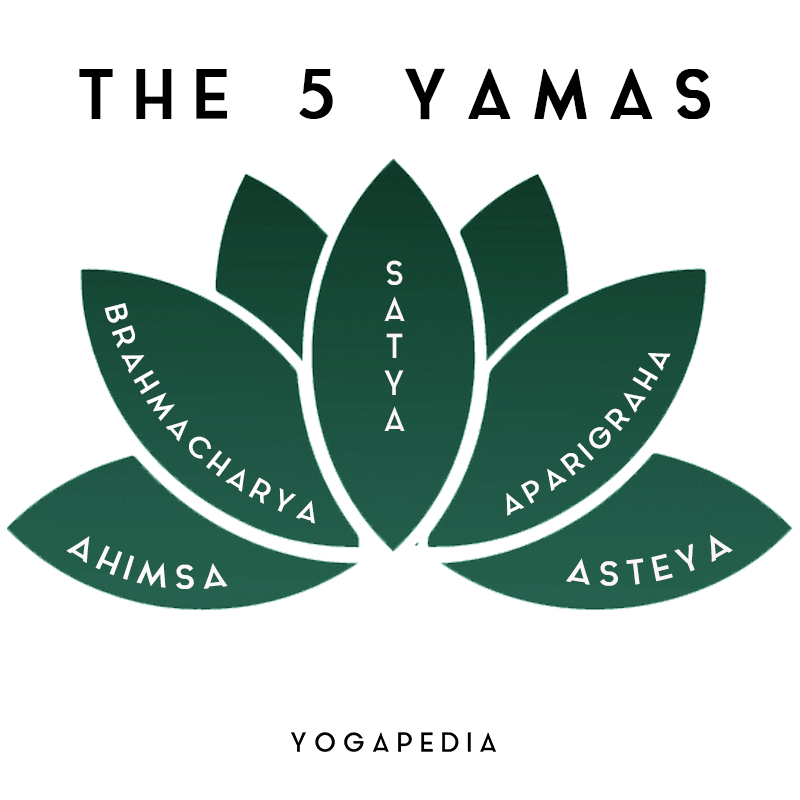
They include:
Read: Yama and Niyama: The Yogi's Moral Guiding Lights
The second limb comprises the Niyamas, or observances that help us to integrate our inner and outer experience, helping us to establish a more harmonious life.
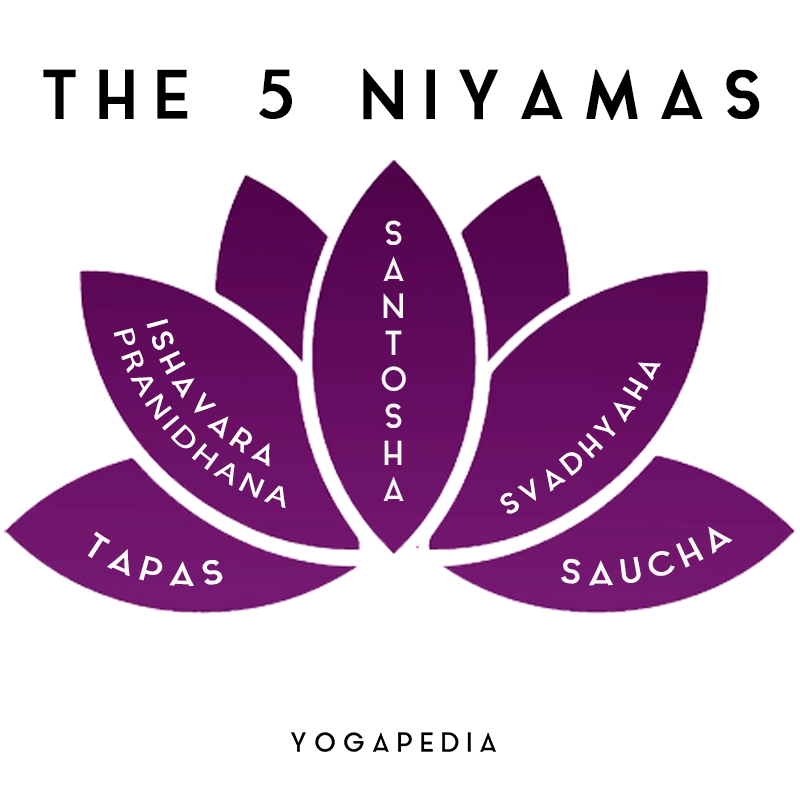
They include:
As described in Hatha yoga, asana is next, the third limb. It is the practice of correct posture to create a stable physical body that can sit at ease in meditation.
The fourth limb is Pranayama, the management of life force energy through the breath, environment and visualization.
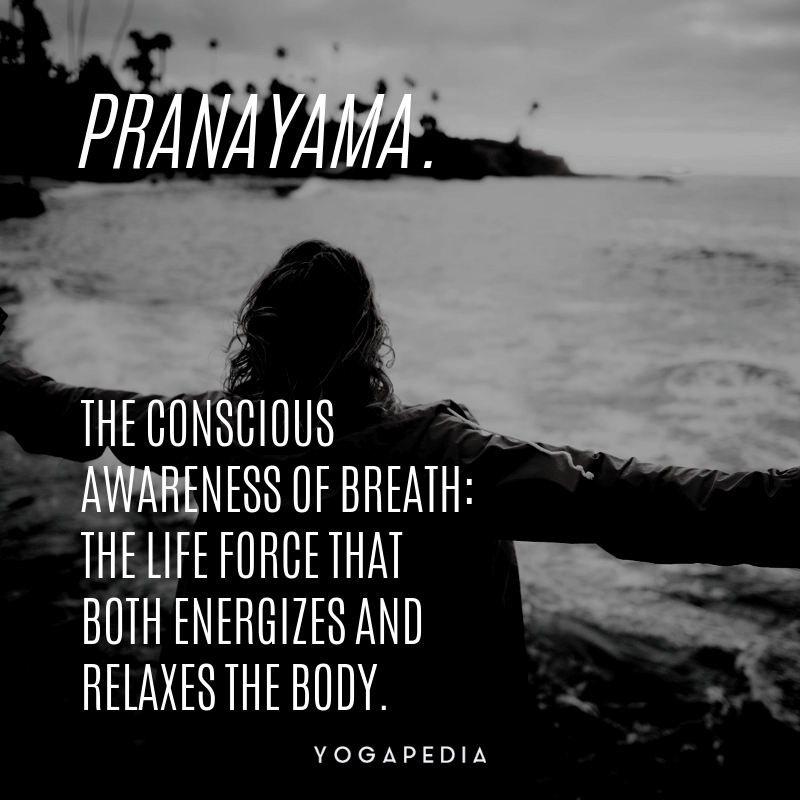
Pratyahara is the fifth limb, and the practice of withdrawing from the sensory pull of the material world in order to shift inward toward stillness.
Once internalized, the sixth limb is Dharana or single-pointed concentration. Dharana is the ability to focus wholeheartedly on our breath, mantra, visualization of the Divine or whatever technique is being used to quiet the mind.
Read: Dharana and Dhyana: Misconceptions of Meditation Explained
This connects to the seventh limb, which is Dhyana, the state of stillness where individual consciousness reunites with universal consciousness.
The eighth limb is Samadhi, the full and final yoga union sustained for all time, the ever-awakening bliss of pure awareness.
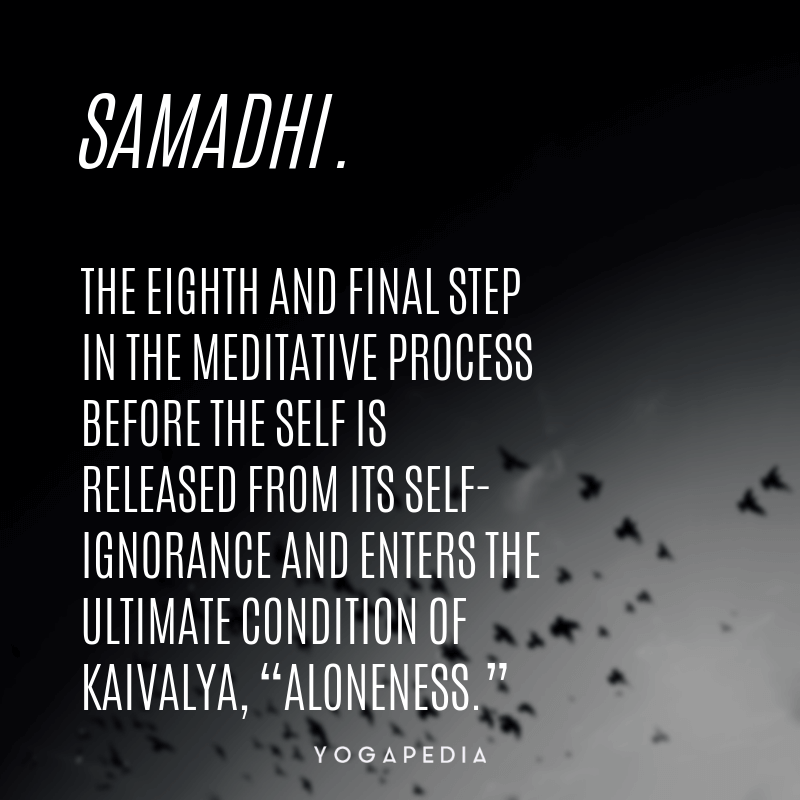
Read: The Eighth Limb of Yoga: Samadhi
Although, these various designations of practice may sound complicated, they all point to the true meaning of yoga, which is union.
The illusion of separation from our true nature is enormous so this may be a lifetime or more of practice, but each aspect of yoga benefits us physically, emotionally, mentally and spiritually as we go along.
Recognizing one source of all consciousness and all creation, yoga as a philosophy can be practiced by anyone, of any religious faith or background.
It is an embodied practice, with harmony-producing directives for our daily life.
Yet its foundation is anchored in the stillness of meditation where we cultivate peace and open ourselves again to unified consciousness.
During These Times of Stress and Uncertainty Your Doshas May Be Unbalanced.
To help you bring attention to your doshas and to identify what your predominant dosha is, we created the following quiz.
Try not to stress over every question, but simply answer based off your intuition. After all, you know yourself better than anyone else.